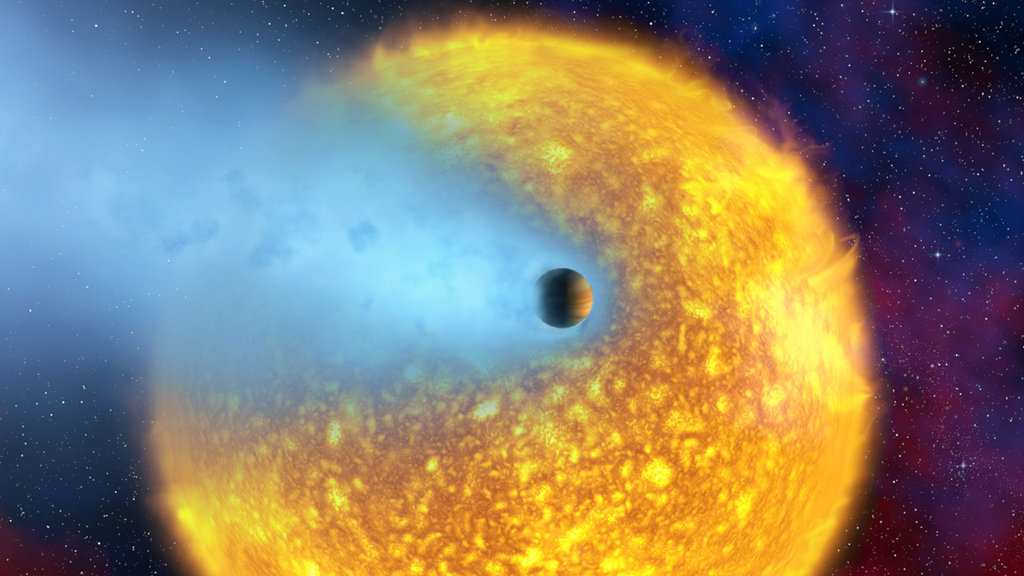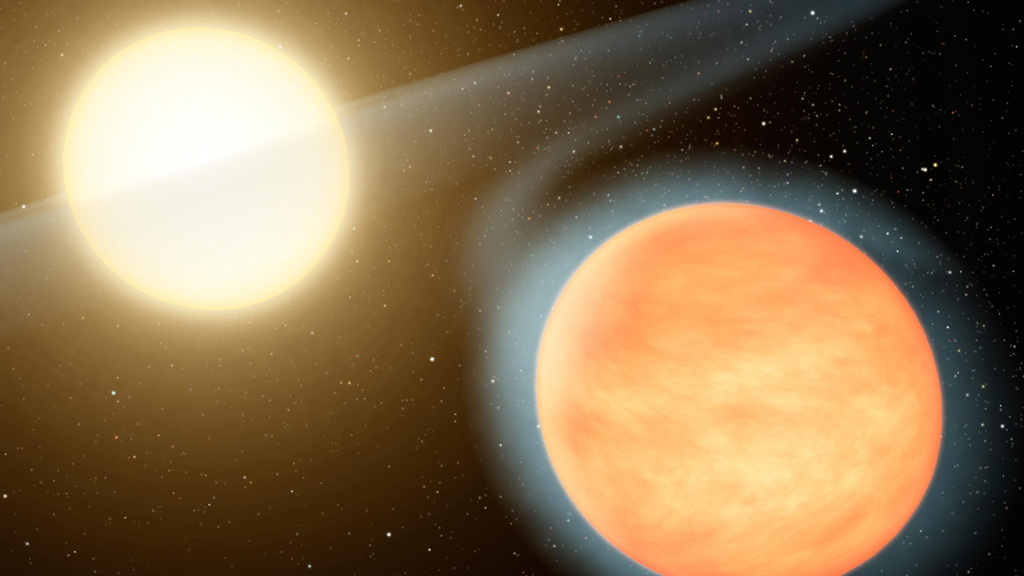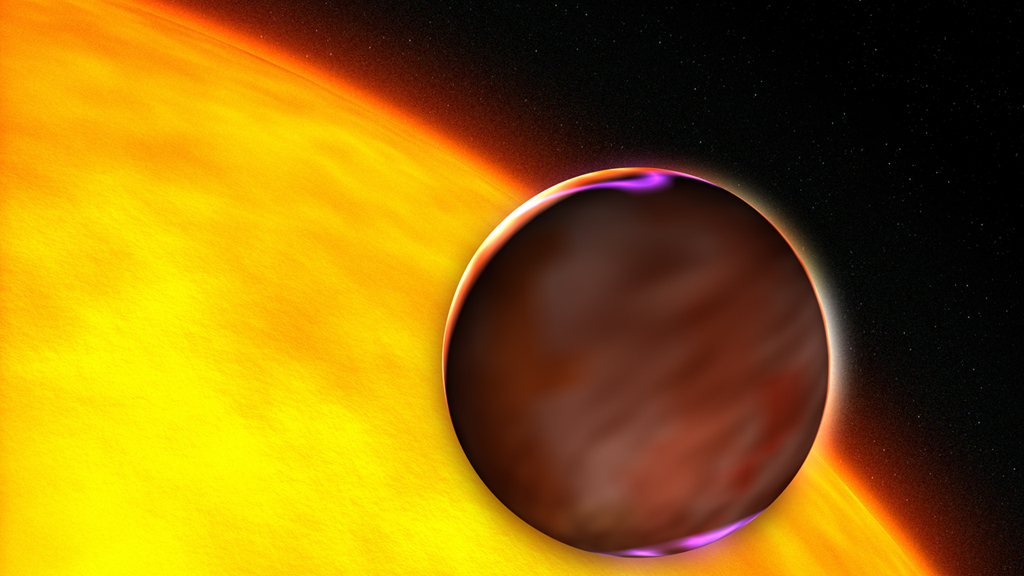Planets and Moons
ID: 11443

Earth, the blue planet, is our idea of a water world. But a planet doesn't have to be earthlike to have water. Using NASA's Hubble Space Telescope, scientists found faint signals of water in the atmospheres of five distant planets. All five—HD 209458b, WASP-12b, WASP-17b, WASP-19b and XO-1b—are a type of exoplanet known as hot Jupiters, massive worlds that orbit very close to their stars. Although the planets were quite hazy, the researchers could tell that two of them had stronger water signals than the other three. Being able to compare planets this way is a key step in figuring out why some worlds wind up with plentiful water yet others don't. Watch the video to see an animation of a hot Jupiter orbiting its star.



Water Worlds




For More Information
Story Credits
Please give credit for this item to:
NASA's Goddard Space Flight Center
Cover image courtesy of NASA/ESA/STScI/G. Bacon
Video courtesy of ESA/Hubble
HD 209458b image courtesy of NASA/ESA/CNRS/Alfred Vidal-Madjar
WASP-12b image courtesy of NASA/JPL-Caltech
XO-1b image courtesy of NASA/ESA/STSci/G. Bacon
NASA's Goddard Space Flight Center
Cover image courtesy of NASA/ESA/STScI/G. Bacon
Video courtesy of ESA/Hubble
HD 209458b image courtesy of NASA/ESA/CNRS/Alfred Vidal-Madjar
WASP-12b image courtesy of NASA/JPL-Caltech
XO-1b image courtesy of NASA/ESA/STSci/G. Bacon
Short URL to share this page:
https://svs.gsfc.nasa.gov/11443
Keywords:
SVS >> App
NASA Science >> Planets and Moons
https://svs.gsfc.nasa.gov/11443
Keywords:
SVS >> App
NASA Science >> Planets and Moons







